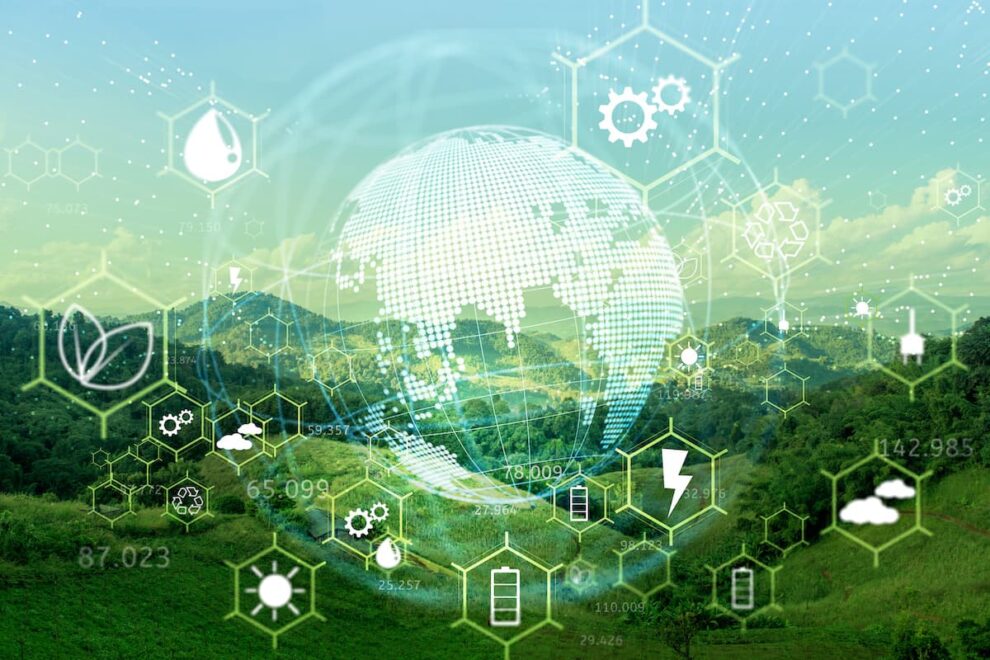The effects of climate change driven by human activity are already apparent across the globe. From rising sea levels consuming coastal communities to extreme weather events devastating infrastructure and agriculture, our planet is calling for urgent action.
In recent years, green technologies have emerged at the forefront of climate change mitigation efforts. Ranging from renewable energy production to carbon capture systems and climate-resilient infrastructure, these innovative solutions aim to curb emissions and adapt to the impacts of a warming world.
/cdn.vox-cdn.com/uploads/chorus_image/image/56437065/shutterstock_117199834.0.jpg)
Battling Emissions at the Source with Clean Energy
Transitioning from fossil fuels to renewable energy sources is imperative for reducing greenhouse gas emissions. Advancements in solar, wind and geothermal technologies are making clean power increasingly cost-competitive.
The Rise of Solar and Wind Farms
From massive solar farms in deserts to offshore wind turbines powering coastal cities, renewables are no longer niche. Improved efficiency and battery storage technology have enabled clean energy to be dispatched on demand to electricity grids.
Rooftop solar panels now allow homes and businesses to generate their own emissions-free electricity. With further innovations like floating solar arrays and bladeless wind turbines on the horizon, the future is bright for renewable energy.
The Promise of Green Hydrogen Fuel
Green hydrogen presents immense potential as a versatile, clean-burning fuel for hard-to-decarbonize industries. Produced via electrolyzers powered by renewable electricity, hydrogen fuel cells emit only water vapor when used.
Applications range from hydrogen-powered transport and shipping to industrial heating and chemical production. With more investments into production technology and infrastructure, green hydrogen could hugely reduce reliance on fossil fuels.
Squeezing More Out of Less Through Efficiency
Enhancing energy efficiency is a powerful and cost-effective way to slash emissions. From smart metering and grids that optimize distribution to intelligent hardware and appliances programmed to minimize consumption, efficiency improvements are invaluable.
In building design, innovations like passive cooling/heating, natural light integration, and thermal insulation are drastically reducing environmental footprints. Every bit of energy saved is emissions prevented.
Cleaning Up Our Mess: Carbon Capture and Removal
While reducing ongoing emissions is crucial, removing excess greenhouse gases already accumulated in the atmosphere is needed to slow climate change. Here too, technology comes to the rescue.
Carbon Capture and Storage (CCS)
CCS facilities capture CO2 from fossil fuel-based power plants and heavy industries before it enters the air. The gas is then compressed and pumped deep underground for secure long-term storage.
While questions remain about potential leakage from reservoirs, CCS is considered vital for decarbonizing cement, steel and chemical production. Some proponents even propose using the CO2 as a feedstock for fuels and materials.
Direct Air Capture (DAC) of CO2
Going a step further than CCS, DAC uses chemical absorbers to extract CO2 directly from ambient air. The benefits include ability to remove emissions from dispersed sources like transport.
The costs and energy requirements of existing DAC technology are still prohibitive for large-scale deployment. But its unique potential to achieve negative emissions and actually reverse climate damage makes DAC an exciting prospect.
Biotechnology for Greenhouse Gas Removal
Innovations in synthetic biology offer cutting-edge solutions for greenhouse gas remediation. For example, researchers are engineering microbes capable of mineralizing atmospheric methane and CO2 into organic carbonates.
Other experimental biotech applications include algae biofuel production from captured carbon. If scalability challenges can be overcome, such nature-inspired approaches could unlock groundbreaking bioremediation potential.
Adapting to Unavoidable Climate Impacts
Alongside urgent mitigation, enhancing resilience and adaptation is crucial for vulnerable regions already facing climate change impacts. New technologies are helping communities brace for rising risk levels.
Climate-Resilient Agriculture
Extreme weather events and shifting local climates threaten food security and farmers’ livelihoods globally. Climate-resilient agriculture leverages technologies like sensors, satellite imaging and AI to protect crops.
From optimizing water and fertilizer usage to breeding hardier crop varieties, precision agriculture solutions help bolster defenses against climate impacts.
AI-Powered Extreme Weather Early Warning
By rapidly analyzing climate data for patterns, AI systems can now predict extreme weather events, floods, droughts and other disasters further in advance and with higher precision. These early warnings give responders vital extra time for protective actions.
Better understanding of future climate conditions also facilitates key planning decisions around infrastructure investments and risk reduction strategies.
Geoengineering: a Risky Climate Fix?
As a last resort, some scientists propose large-scale geoengineering projects to artificially regulate the climate. Techniques range from giant space-mirrors reflecting sunlight to seeding oceans with iron to stimulate algal CO2 absorption.
However, directly hacking complex planetary systems could have catastrophic unintended effects. Geoengineering is also limited in tackling root emissions causes. While research continues, consensus urges extreme caution with deployment.
Collaboration and Equity: Keys to Success
Tech alone cannot fix the climate crisis. Progress hinges on collaborative policy frameworks, equitable access to solutions and widespread adoption of sustainable practices.
Developing nations disproportionately face climate change impacts despite far lower historical emissions. Providing financial and technological support can help vulnerable communities leapfrog carbon-intensive development pathways.
This green tech revolution must service all of humanity. By distributing resources fairly and empowering communities with sustainable choices, we can transition together to a just, climate-positive future.
Our relationship with nature needs realignment. Alongside tech innovation, preserving our shared planetary home requires amendments in our collective values, ethics and behaviors. This multifaceted challenge calls for a holistic response – one grounded in compassion and a recognition of our interdependence with the Earth.
















Add Comment